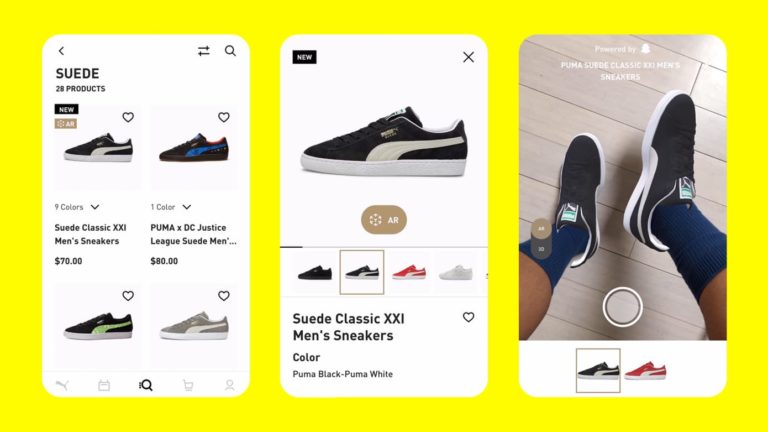
Among AR’s use cases and endpoints, shopping is starting to emerge as a high-value activity. And that value manifests in both utility for consumers and marketing & commerce outcomes for brands. In fact, the latter drives and represents a leading AR revenue category today.
All of this was recently brought together and synthesized in a report from our research arm, ARtillery Intelligence. Entitled, The Immersive Commerce Era: AR & Shopping Collide, it’s also the topic of Episode 63 of ARtillery Briefs, with key takeaways and the full episode below.
Outfit Inspiration
Getting right to the premise, there are two trends we’re tracking that are converging. The first is shoppability. There’s been a longstanding trend in the mobile and eCommerce worlds toward making everything shoppable. We’re talking everything from YouTube clips to TikTok videos.
Among other formats, this usually takes shape in buy buttons and transactional functionality throughout these channels, And it’s not just having a link that bounces you to a retailer’s web page, but a more frictionless and end-to-end transactional flow without leaving the app you’re in.
That last part makes it attractive to ad-supported feed-based social apps. End-to-end shopping flows in places like Instagram help them show concrete ROI to their advertisers. And it’s on the rise: Accenture reports that “social commerce” is on pace for $1.2 trillion by 2025.
The second trend teased above is the rise of “camera commerce.” This involves 3D and spatial product visualization to try on everything from furniture to footwear. Beyond virtual try-ons, this also includes visual search, which lets you point your phone at objects to identify them.
And though visual search will have lots of general-purpose use cases in education and travel, the real killer app could be shopping. It lets consumers identify, and buy, items they encounter in daily travels, including high-value verticals like fashion. Snap calls this “outfit inspiration.”
Zero to Transaction
Panning back, these two macro trends – shoppability and camera commerce – are on a collision course. When you combine them, you can point your phone at a jacket you see on the street using Google Lens or Snap Scan, identify it, then buy it on the spot…all in a few taps.
Notably, this sequence compresses the traditional purchase funnel through a visually-informed consumer shopping flow. And this is a key evolution in shopping and e-commerce where the name of the game has always been to reduce the steps from zero to transaction.
That factor alone gives AR shopping ample appeal among tech giants that facilitate commerce, including everyone from Google to Pinterest. So we’ll continue to see these players refine their AR shopping models as they diversify and future-proof their core businesses.
Speaking of future-proofing, all the above is amplified by gen-z’s affinity for the camera. They’re camera natives which bodes well for AR’s future. Put another way, AR shopping will only grow as Gen-Z continues to gain spending power and phase into the consumer population.
But there’s still a ways to go in capability and culture. Though AR shopping has ample appeal, it’s still a departure from deep-rooted consumer habits. And paradigm shifts like this – however logical and opportune – take time. So expect large-scale, but gradual, transformation.






